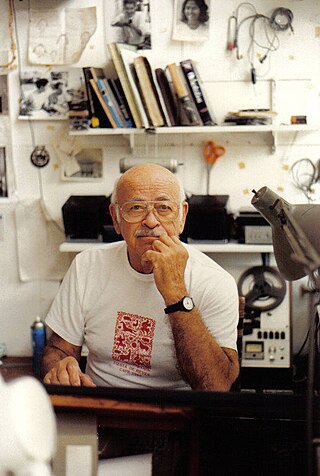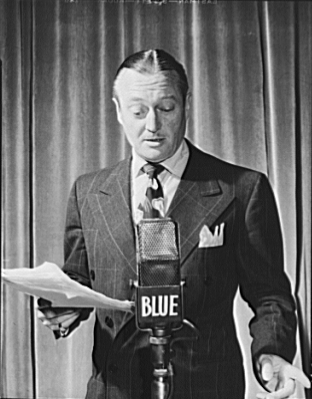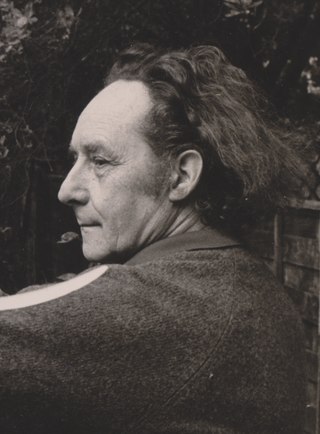In film and television, production designer is the individual responsible for the overall aesthetic of the story. The production design gives the viewers a sense of the time period, the plot location, and character actions and feelings. Working directly with the director, cinematographer, and producer, production designers have a key creative role in the creation of motion pictures and television. The term production designer was coined by William Cameron Menzies while he was working on the film Gone with the Wind. Production designers are commonly confused with art directors as the roles have similar responsibilities. Production designers decide the visual concept and deal with the many and varied logistics of filmmaking including, schedules, budgets, and staffing. Art directors manage the process of making the visuals, which is done by concept artists, graphic designers, set designers, costume designers, lighting designers, etc. The production designer and the art director lead a team of individuals to assist with the visual component of the film. Depending on the size of the production the rest of the team can include runners, graphic designers, drafts people, props makers, and set builders. Productions Designers create a framework for the visual aesthetic of a project and work in partnership and collaboration with the Set Decorator & Set Decorating department to execute the desired look.

John Samuel Waters Jr. is an American filmmaker, writer, actor, and artist. He rose to fame in the early 1970s for his transgressive cult films, including Multiple Maniacs (1970), Pink Flamingos (1972) and Female Trouble (1974). Waters wrote and directed the comedy film Hairspray (1988), which was later adapted into a hit Broadway musical and a 2007 musical film. Other films he has written and directed include Desperate Living (1977), Polyester (1981), Cry-Baby (1990), Serial Mom (1994), Pecker (1998), and Cecil B. Demented (2000). His films contain elements of post-modern comedy and surrealism.

Jack Delano was a Ukrainian immigrant who became an accomplished photographer for the Works Progress Administration, United Fund, and most notably, the Farm Security Administration (FSA). He wore many hats as he also was a composer known for his use of Puerto Rican folk material, started a television production company, and was a cartoonist, poet, moviemaker, professor, and architectural designer.
No wave cinema was an underground filmmaking movement that flourished on the Lower East Side of New York City from about 1976 to 1985. Associated with the artists’ group Collaborative Projects, no wave cinema was a stripped-down style of guerrilla filmmaking that emphasized dark edgy mood and unrehearsed immediacy above many other artistic concerns – similar to the parallel no wave music movement in its raw and rapid style.

Kembra Pfahler is an American performance artist and rock musician.

House of Frankenstein is a 1944 American horror film starring Boris Karloff, Lon Chaney Jr. and John Carradine. It was directed by Erle C. Kenton and produced by Universal Pictures. Based on Curt Siodmak's story "The Devil's Brood", the film is about Dr. Gustav Niemann, who escapes from prison and promises to create a new body for his assistant Daniel. Over the course of the film, they encounter Count Dracula, the Wolf Man and Frankenstein's monster. The film is a sequel to Frankenstein Meets the Wolf Man (1943).
Roger Kemble Furse was an English painter who worked as a costume designer and production designer for both stage and film.

Edmund Sherbourne Lowe was an American actor. His formative experience began in vaudeville and silent film.

Edwin Thomas "Ed" Shaughnessy was a swing music and jazz drummer long associated with Doc Severinsen and a member of The Tonight Show Band on The Tonight Show Starring Johnny Carson.

Patrick Moody Williams was an American composer, arranger, and conductor who worked in many genres of music, and in film and television.

David Gordon was an American dancer, choreographer, writer, and theatrical director prominent in the world of postmodern dance and performance. Based in New York City, Gordon's work has been seen in major performance venues across the United States, Europe, South America and Japan, and has appeared on television on PBS's Great Performances and Alive TV, and the BBC and Channel 4 in Great Britain.
Troy Schumacher is an American choreographer, dancer, and director based in New York City. He is a soloist in the New York City Ballet and has choreographed for the company since 2014; before being promoted to soloist, he danced in NYCB's corps de ballet starting in 2005. He is the founder of Balletcollective, an arts collective that has created new ballet-based works since its inception in 2010. His work has been presented by New York City Ballet, Martha Graham Dance Company, The Metropolitan Museum of Art, Lincoln Center's Mostly Mozart Festival, Performa, Danspace Project, Guggenheim Works & Process, the Joyce Theater, and NYU Skirball Center. In addition to live performances, Schumacher has choreographed numerous fashion and commercial shoots, including works for Sony PlayStation, Capezio featuring Maddie Ziegler, HP, Aritzia, CR Fashion Book, Tom Ford, and The New York Times. He has been dubbed a “visionary artist” by T Magazine and is “one of his generation’s most acclaimed choreographers”
Vincent Peranio is a retired American production designer, art director, set designer, and actor.
Thornton Freeland was an American film director who directed 26 British and American films in a career that lasted from 1924 to 1949.
Charles Atlas is a video artist and film director who also does lighting and set design.

New York Film Festival Downtown was a New York-based film festival founded by Tessa Hughes-Freeland and Ela Troyano in 1984.

Ivor William Gilmour Beddoes was a British matte painter, sketch and storyboard artist, costume and set designer, painter, dancer, composer and poet. He is best known for his film work, spanning more than thirty years, from Black Narcissus and The Red Shoes to Star Wars and Superman.
Coleen Fitzgibbon is an American experimental film artist associated with Collaborative Projects, Inc.. She worked under the pseudonym Colen Fitzgibbon between the years 1973–1980.
Claude Coats was an American artist, background artist, animator and set designer, known for his work with the Walt Disney Animation Studios and Walt Disney Imagineering. His pioneering work with the company helped define the character of animated films, and later, immersive installations with his designs for Disneyland. Coats, known as "The Gentle Giant" was inducted a Disney Legend in 1991.

Blondes for Danger is a 1938 British thriller film directed by Jack Raymond and starring Gordon Harker and Enid Stamp-Taylor. It was made at Beaconsfield Studios for release by British Lion. The film's sets were designed by the art director Norman G. Arnold.










